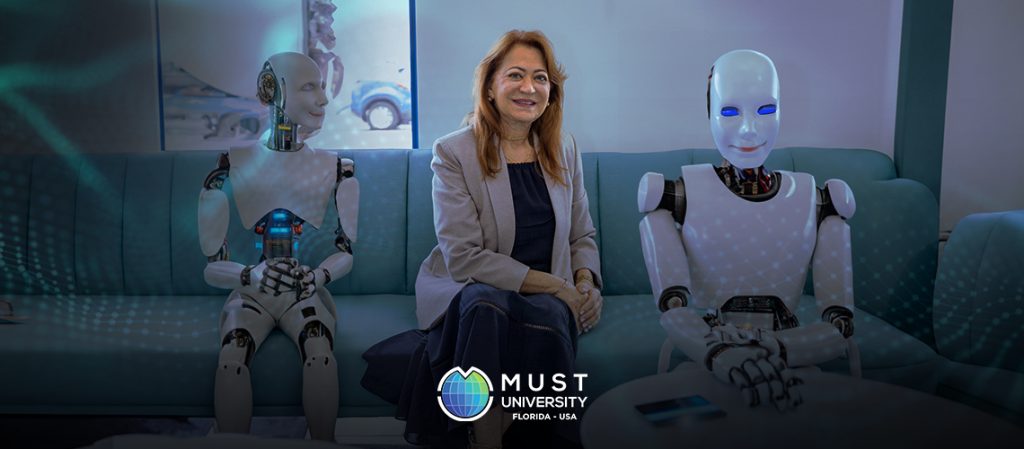Humanoid Developed by Open AI and Figure AI is capable of precision gestures and actions; machine must “work” in an assembly plant.
HENRIQUE SAMPAIO
Article published by the newspaper ‘O Estado de São Paulo’, Sunday, March 15, 2024.
Review: Professor. Dra. M. Elisa Ehrhardt Carbonari (UNICAMP)
Daring to make an introduction to the subject, I present the conceptualization of some fundamental terms to understand the complexity of the topic.
- Humanoid– According to Brett Adcock (CEO of Figure AI), the Humanoid is a robot that has integrated cameras that capture images and process them through a model of visual and verbal language trained by Open AI.
- Artificial intelligence– AI is the ability of a machine to produce human-like skills such as reasoning, learning, planning and creativity.
- Open AI –It is an Artificial Intelligence research laboratory – IA USA, a non-profit organization – OpenAI Incorporated and its for-profit subsidiary OpenAI Limited Partnership.
- A OpenAI conducts AI research with the stated intention of promoting and developing user-friendly AI. (Wikipedia)
- Figure AI – A Figure A.I. is an AI research company, technology that is only 2 years old, and does not yet have a commercial product.
The article begins with the news that a “Humanoid Developed by Open AI and Figure AI, capable of precision gestures and actions; and that this machine must “work” in an assembly plant at the BMW factory, the first company to close a contract with Figure AI that will equip a factory of the German automaker in South Carolina-USA.
The Humanoid Robot Figure 01, the result of work between Open AI and Figure AI, based in California USA, has caused astonishment with its realism and precision since its last presentation, capable of understanding and interpreting human language and responding not only with speech, but with gestures and very precise actions.
In the video presented by Figure AI, the robot responds to a series of requests from a man, recognizing all the items on a table, offering the only edible item, an apple, when he is asked for something to eat.
Also according to Figure AI, the robot is capable of learning on its own, according to what the company calls “low-level learned bimanual manipulation”, a system that combines image calibrations with a neural network to control movement, determining wrist poses and finger joint angles with great precision.
In October 2023, Figure AI had already presented its humanoid robot standing performing simple tasks, demonstrating some of their observational learning capabilities.
Figure AI is just a 2-year-old company and has no commercial product, however, influential supporters in the technology industry could support sending billions of human-like robots into the world’s workplaces and homes.
According to Adcock 2024: “If we can get humanoids to do the work that humans don’t want to do (because for some jobs there is a shortage of humans), we can sell millions of Humanoids” (without mentioning financial terms).
Those Humanoids They likely followed models based on Open AI’s existing GPT language technology.
However, there are disagreements. Robotics experts differ on the usefulness of robots molded in human form. For example, most robots that work in factory and warehouse tasks may have some animal-like characteristics, arms, finger-like claws, and legs but are not truly humanoid.
This is because robotics engineers took decades to develop robots that could walk or manipulate small objects reliably.
Whitney Rockley (2024), co-founder and managing partner of the venture capital firm McRock Capital, Toronto (Canada), understands that Humanoids they are relatable, evoke emotions and even start conversations. In practice, she states that: “they are still strange and represent enormous technical challenges, and that is why she continues to invest in robots not Humanoids.
Just like ChatGPT, it will be essential that in the future, the Humanoid have good commands so that the machines work accurately.
I end the review by pointing out that many countries are looking for ways to regulate technology, including issues such as ethics, transparency, copyright, and social well-being. However, we all know that the most difficult thing is dealing with the speed and evolution of technology, considering that every day these systems become increasingly sophisticated, providing advances that have not yet been imagined.
Prof. M. Elisa Ehrhardt Carbonari – PhD in Education-UNICAMP
Vice-President – MUST University – FL USA
Coordinator of the Master’s Program in Emerging Technologies in Education
March/2024





